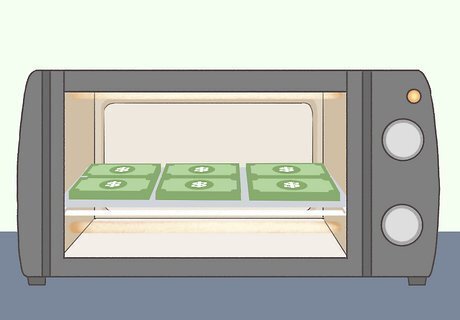
views
Memorizing Through Repetition

Write out the entire speech. Simply take a piece of paper and a pen and write out the entire speech. If the speech is relatively short, consider writing it out multiple times. Many people memorize information better when they are actively recording it. Copying the speech on another piece of paper can help to commit that information to memory.

Type up the speech. Much like writing the speech out on paper, typing the speech can also help commit the information to memory through visual learning. Since typing is generally faster than handwriting, you may have more time to type the speech several times in one night. There is no need to print the typed speech each time that you type it. However, you may be more likely to remember things that are handwritten rather than typed.

Rehearse your speech for a friend. Sometimes you may think that you know your speech well, but you freeze up when you perform it in front of people. It is important to practice the speech in front of someone to ensure that you really know the information. Request that your friend give you some tips. They may be able to tell you if you are not speaking loud enough or if you are talking too quickly.

Record yourself rehearsing the speech. If you don’t have anyone to practice with, try recording yourself while you rehearse your speech. Video recording is the best because you will be able to watch the recording and critique your speech and body language. You can also listen to the recording while you are doing other things to help remember the information.

Avoid trying to memorize the speech word for word. Normally, it is not necessary to recite a speech word for word. It is more important to remember all of the topics that you need to cover during the speech. Spend time memorizing the bullet points, important facts and statistics, and the layout of your speech in order to guarantee that you cover all of the information that needs to be covered.
Using the Memory Palace Technique

Organize your speech into bullet points. Divide the speech into several bullet points. Each bullet point should be about a different topic. Write these bullet points down on a piece of paper or note cards.

Pinpoint locations in your home for each bullet point. Count the bullet points and locate the same number of pieces of furniture in your home, office, or wherever you are memorizing your speech. For example, if you have ten bullet points you will need to pinpoint ten separate pieces of furniture.

Visualize an object for each bullet point. Once you have determined the furniture that you will use for the memory palace, visualize an object that relates to each bullet point. For example, if the bullet refers to finances you may visualize dollar bills. If the bullet is discussing fashion you may visualize a shirt.

Match the bullet point with an object and piece of furniture. Assign a piece of furniture with each bullet point and object. Then visualize the object with the piece of furniture. For example, you may discuss fashion by visualizing a row of shirts in the wardrobe. When talking about finances you may visualize dollar bills coming out of the oven.
Preparing for Success

Get enough sleep. Although it might seem tempting to stay up all night to prepare for your speech, it probably won’t help you. A lack of sleep increases your stress levels and decreases your ability to focus. Be sure that you get at least eight hours of sleep the night before your speech.

Take a break. It is important to remember to take care of your body even when you are cramming for a presentation. Take some time to take a quick walk. Don’t forget to eat meals and keep yourself hydrated. These steps are equally important in memorizing your speech.

Learn how to keep calm. Make a list of things that scare you about the speech. Then, try to tackle those fears. If eye contact makes you lose focus, try looking just above your audience’s head. Try giving your speech behind a podium or while holding a microphone to keep your hands busy. Use deep breathing exercises to keep yourself calm before your speech.



















Comments
0 comment